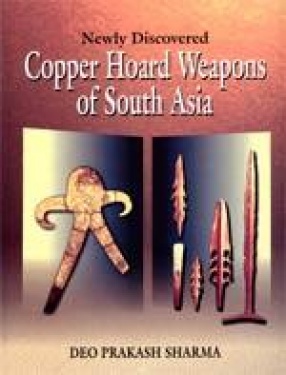South Asian Terracotta Through the Ages C.7000 B.C.-578 A.D. (In 3 Volumes)
Volume Title:volume-I. South Asian terracottas art from earliest time to Mauryan period : (c. 7000 B.C. - 185 B.C.) -- volume-II. South Asian terracotta art - Sunga, Kushan, Satvahan period (c. 185 B.C. - 200 A.D.) -- volume-III. South Asian terracotta art : Kushan-Gupta transition to Gupta period (250-578 A.D.).
This book “South Asian Terracotta Art Through the Ages” are in three volumes. These are documentation work of Terracotta Art which are mostly in India and some rare items of Pakistan and other countries his Volume I covers mostly Harappan and Mauryan Terracotta Art. This is photo documentation of rare Harappan, Post Harappan & Mauryan Terracottas objects. Till today we have excavated 252 Harappan sites in north west part of south Asia. The art style of the Early Harappan terracotta art is primitive and these are hand made. Their facial contour is absent and bare breasts are mostly round in shape, which represents fertility cult. The bottle shaped terracotta mother goddess figurines having bird like face and joint legs shows Iranian influence in this region. With the mature Harappans first urban stage (3000-1900 B.C.) began a new era of terracotta art, produced a large variety of terracottas and in great quantities at urban sites like Dholavira, Banawali, Rakhigarhi, Baror, Bhirrana, Lothal, Chanhudaro, Kalibangan, Nausharo, Nagwada, Harappa and Mohenjodaro. Most of these are hand-made by pinching and appliqué method. The mature Harappans also rarely used single mould technique and few puppet masks discovered from Mohenjodaro and Harappa were mould made and majority of the Harappan terracotta are solid. Second Volume is on Sunga Kusana and Satavahana Terracottas Art. The Shunga artists of the 2nd and 1st centuries B.C. brought revolution in the field of terracotta art by introducing once again the technique of single mould which led to mass production and standardization of figuring’s. For the first time, themes and legends from ancient literature, scenes from everyday life and various icons etc. formed the subject matter to terracotta art. A large number of Shunga terracottas have been found at Patna, Buxur, Kausambi, Mathura, Chandraketugarh, Tamluk etc.
Get it now and save 10%
BECOME A MEMBER











Bibliographic information